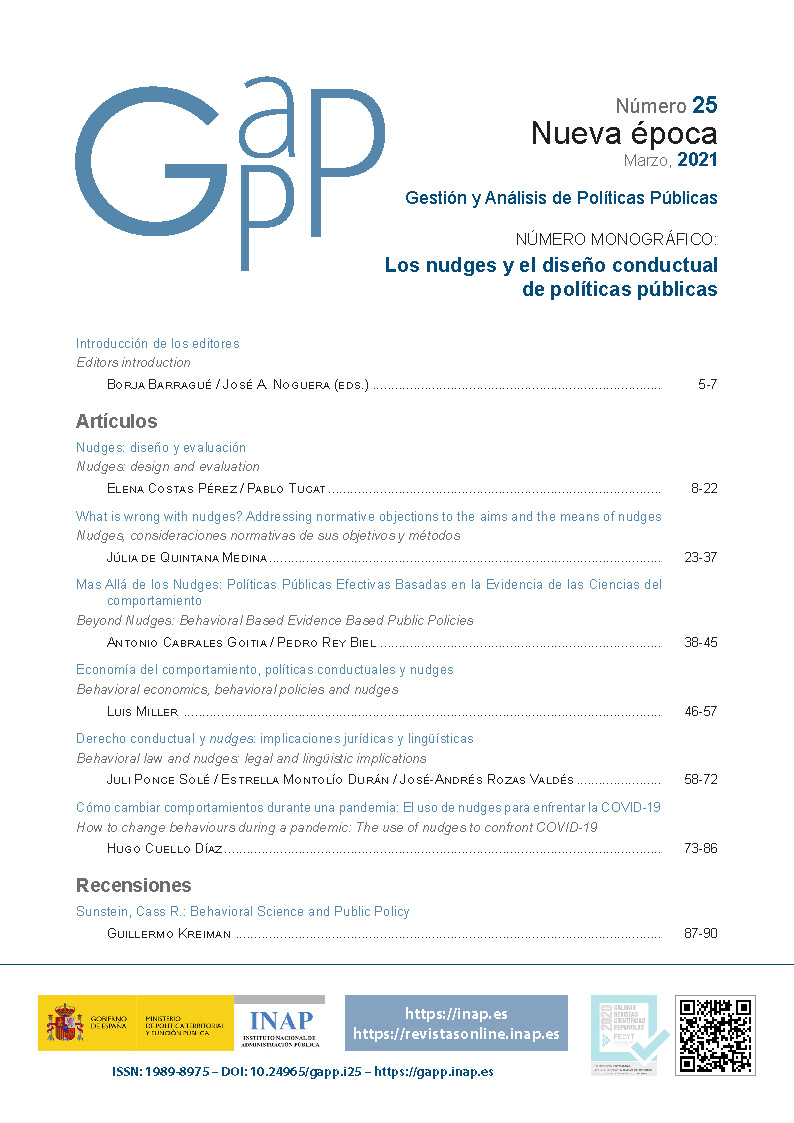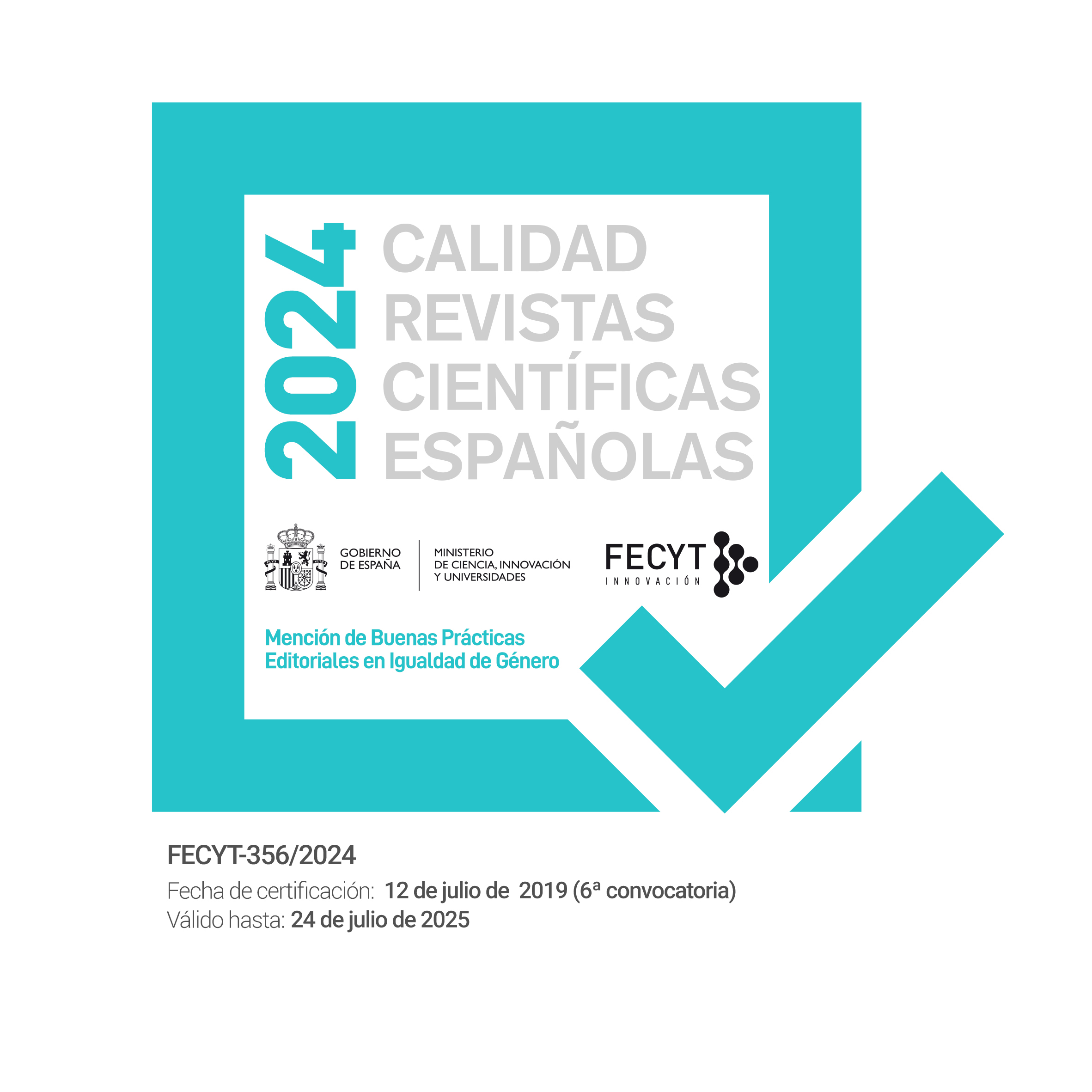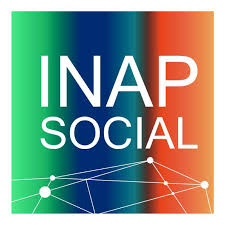Nudges: diseño y evaluación
DOI:
https://doi.org/10.24965/gapp.i25.10868Palabras clave:
economía del comportamiento, políticas públicas, ensayos controlados aleatorizados, política basada en evidencia, nudgesResumen
La literatura sobre nudges y su evaluación es extensa, y destaca la diversidad de sesgos de comportamiento y posibles intervenciones. Los nudges buscan modificar la arquitectura de las decisiones individuales, intentando cambiar el comportamiento de las personas en una dirección concreta y a un bajo coste. Su impacto debe tener en cuenta el coste-efectividad del dinero invertido, en comparación a otras intervenciones públicas más tradicionales que persiguen el mismo objetivo. El uso de experimentos en su evaluación ha convertido a los nudges en una importante herramienta de la política basada en la evidencia, mejorando así el diseño y efectividad de la acción pública. En este artículo buscamos revisar el conocimiento actual en torno al diseño y evaluación de los nudges, y su importancia para el desarrollo de políticas basadas en evidencia.
Descargas
Citas
Abadie, A. y Gay, S. (2006). The impact of presumed consent legislation on cadaveric organ donation: A cross-country study. Journal of Health Economics, 25(4), 599-620. https://doi.org/10.1016/j.jhealeco.2006.01.003
Abaluck, J. y Gruber, J. (2011). Choice inconsistencies among the elderly: Evidence from plan choice in the Medicare Part D program. American Economic Review, 101(4), 1.180-1.210. https://doi.org/10.1257/aer.101.4.1180
Afif, Z., Islan, W. W., Calvo-Gonzalez, O. y Dalton, A. G. (2018). Behavioral Science Around the World: Profiles of 10 Countries. World Bank Group. http://documents1.worldbank.org/curated/en/710771543609067500/pdf/132610-REVISED-00-COUNTRY-PROFILES-dig.pdf
Allcott, H. (2011). Social norms and energy conservation. Journal of Public Economics, 95(9-10), 1.082-1.095. https://doi.org/10.1016/j.jpubeco.2011.03.003
Ariely, D. y Loewenstein, G. (2006). The heat of the moment: The effect of sexual arousal on sexual decision making. Journal of Behavioral Decision Making, 19(2), 87-98. https://doi.org/10.1002/bdm.501
Ariely, D. y Wertenbroch, K. (2002). Procrastination, deadlines, and performance: Self-control by precommitment. Psychological Science, 13(3), 219-224. https://doi.org/10.1111/1467-9280.00441
Barrows, A., Dabney, N., Hayes, J. y Rosenberg, R. (2018). Behavioral Design Teams. A Model for Integrating Behavioral Design in City Government. Ideas42. https://www.ideas42.org/wp-content/uploads/2018/04/BDT_Playbook_FINAL-digital.pdf
Battaglio, R. P., Belardinelli, P., Bellé, N. y Cantarelli, P. (2019). Behavioral Public Administration ad fontes: A Synthesis of Research on Bounded Rationality, Cognitive Biases, and Nudging in Public Organizations. Public Administration Review, 79(3), 304-320. https://doi.org/10.1111/puar.12994
Behavioural Insights Team. (2010). Applying behavioural insight to health [Policy Paper]. The Cabinet Office. https://www.gov.uk/government/publications/applying-behavioural-insight-to-health-behavioural-insights-team-paper
Behavioural Insights Team. (2012). Applying Behavioural Insights to Reduce Fraud, Error and Debt [Policy Paper]. The Cabinet Office. https://www.gov.uk/government/publications/fraud-error-and-debt-behavioural-insights-team-paper
Benartzi, S., Beshears, J., Milkman, K. L., Sunstein, C. R., Thaler, R. H., Shankar, M., Tucker-Ray, W., Congdon, W. J. y Galing, S. (2017). Should Governments Invest More in Nudging? Psychological Science, 28(8), 1.041-1.055. https://doi.org/10.1177/0956797617702501
Benartzi, S. y Thaler, R. H. (2007). Heuristics and biases in retirement savings behavior. Journal of Economic Perspectives, 21(3), 81-104. https://doi.org/10.1257/jep.21.3.81
Bettinger, E. P., Long, B. T., Oreopoulos, P. y Sanbonmatsu, L. (2012). The Role of Application Assistance and Information in College Decisions: Results from the H&R Block FAFSA Experiment. Quarterly Journal of Economics, 127(3), 1.205-1.242. https://doi.org/10.1093/qje/qjs017
Bhargava, S. y Loewenstein, G. (2015). Behavioral economics and public policy 102: Beyond nudging. American Economic Review, 105(5), 396-401. https://doi.org/10.1257/aer.p20151049
Buehler, R., Griffin, D. y Ross, M. (1994). Exploring the «Planning Fallacy»: Why People Underestimate Their Task Completion Times. Journal of Personality and Social Psychology, 67(3), 366-381. https://web.mit.edu/curhan/www/docs/Articles/biases/67_J_Personality_and_Social_Psychology_366,_1994.pdf
Carrillo, P. E., Castro, E. y Scartascini, C. (2017). Do Rewards Work?: Evidence from the Randomization of Public Works (IDB Working Paper 794). Inter-American Development Bank. https://publications.iadb.org/en/do-rewards-work-evidence-randomization-public-works
Castleman, B. L. y Meyer, K. E. (2020). Can Text Message Nudges Improve Academic Outcomes in College? Evidence from a West Virginia Initiative. The Review of Higher Education, 43(4), 1.125-1.165. https://doi.org/10.1353/rhe.2020.0015
Castro, L. y Scartascini, C. (2014). El diablo está en los detalles. Algunas lecciones para el diseño de políticas públicas. Resumen de Políticas, IDB-PB-232. Banco Interamericano de Desarrollo. https://publications.iadb.org/es/publicacion/16875/el-diablo-esta-en-los-detalles-algunas-lecciones-para-el-diseno-de-politicas
Davies, H. T. O., Nutley, S. M. y Smith, P. C. (2000). What works? Evidence-based policy and practice in public services. Bristol University Press. https://doi.org/10.2307/j.ctt1t892t3
De Gilder, D., Schuyt, T. N. M. y Breedijk, M. (2005). Effects of an Employee Volunteering Program on the Work Force: The ABN-AMRO Case. Journal of Business Ethics, 61(2), 143-152. Springer. https://doi.org/10.1007/s10551-005-7101-x
Deaton, A. (2020). Randomization in the Tropics Revisited: a Theme and Eleven Variations (NBER Working Paper, 27.600). National Bureau of Economic Research. https://doi.org/10.3386/w27600
DellaVigna, S. y Linos, E. (2020). RCTs to Scale: Comprehensive Evidence from Two Nudge Units (NBER Working Paper, 27.594). National Bureau of Economic Research. https://doi.org/10.3386/w27594
Dhami, S. (2016). The foundations of behavioral economic analysis. Oxford University Press.
Dolan, P., Hallsworth, M., Halpern, D., King, D. y Vlaev, I. (2010). MINDSPACE: Influencing behaviour through public policy. Institute of Government. https://www.instituteforgovernment.org.uk/sites/default/files/publications/MINDSPACE.pdf
Duflo, E., Kremer, M. y Robinson, J. (2011). Nudging farmers to use fertilizer: Theory and experimental evidence from Kenya. American Economic Review, 101(6), 2.350-2.390. https://doi.org/10.1257/aer.101.6.2350
Einfeld, C. (2019). Nudge and evidence based policy: fertile ground. Evidence & Policy: A Journal of Research, Debate and Practice, 15(4), 509-524. https://doi.org/10.1332/174426418X15314036559759
European Commission (2013). Vulnerable Consumer Working Group Guidance Document on Vulnerable Consumers, November 2013. Vulnerable Consumer Working Group. https://ec.europa.eu/energy/sites/ener/files/documents/20140106_vulnerable_consumer_report_0.pdf
Fehr, E. y Gächter, S. (2000). Fairness and Retaliation: The Economics of Reciprocity. The Journal of Economic Perspectives, 14(3), 159-181. American Economic Association. https://doi.org/10.2307/2646924
Frey, B. S. (1994). How Intrinsic Motivation is Crowded out and in. Rationality and Society, 6(3), 334-352. https://doi.org/10.1177/1043463194006003004
Fryer Jr., R. G. (2011). Teacher Incentives and Student Achievement: Evidence from New York City Public Schools (NBER Working Paper, 16.850). National Bureau of Economic Research. https://doi.org/10.3386/w16850
Galle, B. (2014). Tax, Command… or Nudge? Evaluating the New Regulation. Texas Law Review, 92(4), 837-894. http://texaslawreview.org/wp-content/uploads/2015/08/Galle-92-4.pdf
García Arteagoitia, S. (2019). El éxito y el potencial del nudge en las políticas públicas. Revista Vasca de Gestión de Personas y Organizaciones Públicas, (3 Especial), 140-155. https://www.ivap.euskadi.eus/contenidos/informacion/rvgp_ultimo_numero/es_def/Garc%C3%ADa%20140_155.pdf
Giné, X., Karlan, D. y Zinman, J. (2010). Put your money where your butt is: A commitment contract for smoking cessation. American Economic Journal: Applied Economics, 2(4), 213-235. https://doi.org/10.1257/app.2.4.213
Glennerster, R. y Takavarasha, K. (2013). Running randomized evaluations: A practical guide. Princeton University Press.
Guszcza, J. y Murphy, T. (2017). Cognitive Collaboration: What Data Science Can Learn from Psychology. En A. Samson (Ed.), The Behavioral Economics Guide 2017 (pp. 41-46).
Haynes, L., Service, O., Goldacre, B. y Torgerson, D. (2013). Test, Learn, Adapt: Developing Public Policy with Randomised Controlled Trials. The Cabinet Office. Behavioural Insights Team. https://www.bi.team/publications/test-learn-adapt-developing-public-policy-with-randomised-controlled-trials/
Hershfield, H. E., Goldstein, D. G., Sharpe, W. F., Fox, J., Yeykelis, L., Carstensen, L. L. y Bailenson, J. N. (2011). Increasing saving behavior through age-progressed renderings of the future self. Journal of Marketing Research, 48(SPL), S23-S37. https://doi.org/10.1509/jmkr.48.SPL.S23
Homonoff, T., Kao, L.-S., Palmer, D. y Seybolt, C. (2018). Skipping the bag. Assessing the impact of Chicago’s tax on disposable bags. NYU Wagner. https://wagner.nyu.edu/impact/research/publications/skipping-bag-assessing-impact-chicagos-tax-disposable-bags
Hopkins, A., Breckon, J. y Lawrence, J. (2020). The Experimenter’s Inventory. A catalogue of experiments for decision-makers and professionals. Alliance for Useful Evidence is a network – Nesta. https://www.alliance4usefulevidence.org/assets/2020/01/The-Experimenters-Inventory-A-catalogue-of-experiments-for-decision-makers-and-professionals.pdf.pdf
Hummel, D. y Maedche, A. (2019). How effective is nudging? A quantitative review on the effect sizes and limits of empirical nudging studies. Journal of Behavioral and Experimental Economics, 80, 47-58. https://doi.org/10.1016/j.socec.2019.03.005
Internal Revenue Service (2017). Behavioral Insights Toolkit. IRS. https://www.irs.gov/pub/irs-soi/17rpirsbehavioralinsights.pdf
Iyengar, S. S. y Lepper, M. R. (2000). When choice is demotivating: can one desire too much of a good thing? Journal of Personality and Social Psychology, 79(6), 995-1.006. https://doi.org/10.1037/0022-3514.79.6.995
Johnson, E. J. y Goldstein, D. (2003). Do Defaults Save Lives? Science, 302(5.649), 1.338-1.339. https://doi.org/10.1126/science.1091721
Kahneman, D. (1994). New Challenges to the Rationality Assumption. Journal of Institutional and Theoretical Economics, 150(1), 18-36. https://www.jstor.org/stable/40753012
Kahneman, D. (2011). Thinking, Fast and Slow (edición 2013). Macmillan.
Kahneman, D. y Tversky, A. (1972). Subjective probability: A judgment of representativeness. Cognitive Psychology, 3(3), 430-454. https://doi.org/10.1016/0010-0285(72)90016-3
Kahneman, D. y Tversky, A. (1979). Prospect theory: An analysis of decision under risk. Econometrica, 47(2), 263-292. https://doi.org/10.2307/1914185
Kamenica, E. (2012). Behavioral Economics and Psychology of Incentives. Annual Review of Economics, 4(1), 427-452. https://doi.org/10.1146/annurev-economics-080511-110909
King, D., Jabbar, A., Charani, E., Bicknell, C., Wu, Z., Miller, G., Gilchrist, M., Vlaev, I., Franklin, B. D. y Darzi, A. (2014). Redesigning the «choice architecture» of hospital prescription charts: A mixed methods study incorporating in situ simulation testing. BMJ Open, 4(12), 5.473. https://doi.org/10.1136/bmjopen-2014-005473
Kosters, M. y Van der Heijden, J. (2015). From mechanism to virtue: Evaluating Nudge theory. Evaluation, 21(3), 276-291. https://doi.org/10.1177/1356389015590218
Lange, I., Moro, M. y Mahbubur Rahman, M. (2018). Cleaner Nudges? Policy Labels and Investment Decision-making. The Energy Journal, 39(6). https://doi.org/10.5547/01956574.39.6.ilan
Lindblom, C. E. (1959). The Science of «Muddling Through». Public Administration Review, 19(2), 79-88. https://doi.org/10.2307/973677
Lipkus, I., Klein, W., Skinner, C. S. y Rimer, B. (2005). Breast cancer risk perceptions and breast cancer worry: What predicts what? Journal of Risk Research, 8(5), 439-452. https://doi.org/10.1080/1366987042000311018
List, J. A. (2006). Field Experiments: A Bridge between Lab and Naturally Occurring Data. The B.E. Journal of Economic Analysis & Policy, 5(2). https://doi.org/10.2202/1538-0637.1747
List, J. A., Sadoff, S. y Wagner, M. (2011). So you want to run an experiment, now what? Some simple rules of thumb for optimal experimental design. Experimental Economics, 14(4), 439-457. https://doi.org/10.1007/s10683-011-9275-7
Madaleno, M. y Waights, S. (2016). Guide to scoring methods using the Maryland Scientific Methods Scale. What Works Centre for Local Economic Growth. https://whatworksgrowth.org/public/files/Scoring-Guide.pdf
Madrian, B. C. y Shea, D. F. (2001). The power of suggestion: Inertia in 401 (k) participation and savings behavior. The Quarterly Journal of Economics, 116(4), 1.149-1.187. https://www.jstor.org/stable/2696456
Manoli, D. y Turner, N. (2014). Nudges and Learning: Evidence from Informational Interventions for Low-Income Taxpayers (NBER Working Paper, 20.718). National Bureau Of Economic Research. https://doi.org/10.3386/w20718
Martínez Villarreal, D., Rojas Méndez, A. M. y Scartascini, C. (2020). La economía del comportamiento puede ayudar a combatir el coronavirus. Resumen de Políticas, IDB-PB-334. Banco Interamericano de Desarrollo. http://dx.doi.org/10.18235/0002315
Mullainathan, S. y Shafir, E. (2013). Scarcity: Why having too little means so much. Times Books. http://sc.arcity.co/
Nisbett, R. E. y Wilson, T. D. (1977). The Halo Effect: Evidence for Unconscious Alteration of Judgments. Journal of Personality and Social Psychology, 35(4), 250-256. https://doi.org/10.1037/0022-3514.35.4.250
O’Donoghue, T. y Rabin, M. (1999). Doing It Now or Later. American Economic Review, 89(1), 103-124. https://doi.org/10.1257/aer.89.1.103
OECD (2019). Tools and Ethics for Applied Behavioural Insights: The BASIC Toolkit. OECD Publishing. https://doi.org/10.1787/9ea76a8f-en
Pallier, G., Wilkinson, R., Danthiir, V., Kleitman, S., Knezevic, G., Stankov, L. y Roberts, R. D. (2002). The role of individual differences in the accuracy of confidence judgments. Journal of General Psychology, 129(3), 257-299. https://doi.org/10.1080/00221300209602099
Pollitt, C. (1995). Justification By Works Or By Faith? Evaluating The New Public Management. Evaluation, 1(2), 133-154. https://doi.org/10.1177/135638909500100202
Rogers, E. y Weber, E. P. (2010). Thinking Harder About Outcomes for Collaborative Governance Arrangements. The American Review of Public Administration, 40(5), 546-567. https://doi.org/10.1177/0275074009359024
Sabel, C. F. y Zeitlin, J. (2012). Experimentalist Governance. The Oxford Handbook of Governance, 1, 2-4. https://doi.org/10.1093/oxfordhb/9780199560530.013.0012
Samson, A. (ed.) (2020). The Behavioral Economics Guide 2020 (con introducción de Colin Camerer). Behavioral Science Solutions. https://www.behavioraleconomics.com/be-guide/the-behavioral-economics-guide-2020/
Samuelson, W. y Zeckhauser, R. (1988). Status quo bias in decision making. Journal of Risk and Uncertainty, 1(1), 7-59. https://doi.org/10.1007/BF00055564
Sanders, M. (2015). In search of the limits of applying reciprocity in the field: Evidence from two large field experiments. The Behavioural Insights Team and Harvard Kennedy School of Government. https://www.bi.team/publications/in-search-of-the-limits-of-applying-reciprocity-in-the-field-evidence-from-two-large-field-experiments/
Schultz, P. W., Nolan, J. M., Cialdini, R. B., Goldstein, N. J. y Griskevicius, V. (2007). The Constructive, Destructive, and Reconstructive Power of Social Norms. Psychological Science, 18(5), 429-434. https://www.jsmf.org/meetings/2008/july/social%20norms%20Cialdini.pdf
Service, O., Hallsworth, M., Halpern, D., Algate, F., Gallagher, R., Nguyen, S., Ruda, S., Sanders, M. with Marcos Pelenur, M., Gyani, A., Harper, H., Reinhard, J. y Kirkman, E. (2014). EAST: Four simple ways to apply behavioural insights. The Behavioural Insights Team. https://www.bi.team/publications/east-four-simple-ways-to-apply-behavioural-insights/
Shafir, E. (2007). A behavioural background for economic policy. Behavioural Economics and Public Policy. Australian Government Productivity Commission. https://www.pc.gov.au/research/supporting/behavioural-economics/shafir.pdf
Sharot, T. (2011). The optimism bias. Current Biology, 21(23), R941-R945. https://doi.org/10.1016/j.cub.2011.10.030
Simon, H. A. (1956). Rational choice and the structure of the environment. Psychological Review, 63(2), 129-138. https://doi.org/10.1037/h0042769
Straßheim, H. y Beck, S. (eds.). (2019). Handbook of Behavioural Change and Public Policy. (Handbooks of Research on Public Policy series) Edward Elgar Publishing. https://doi.org/10.4337/9781785367854
Straßheim, H., Jung, A. y Korinek, R.-L. (2015). Reframing expertise: The rise of behavioural insights and interventions in public policy. En A. Berthoin Antal, M. Hutter y D. Stark (eds.), Moments of valuation. Exploring sites of dissonance (pp. 249-268). Oxford University Press. https://doi.org/10.1093/acprof:oso/9780198702504.003.0013
Thaler, R. H. y Sunstein, C. R. (2009). Nudge: Improving Decisions About Health, Wealth, and Happiness. Yale University Press.
Thompson, S., Michaelson, J., Abdallah, S., Johnson, V., Morris, D., Riley, K. y Simms, A. (2011). «Moments of change» as opportunities for influencing behaviour: A report to the Department for Environment, Food and Rural Affairs, nef (the new economics foundation). Defra. https://core.ac.uk/reader/9717890
Tversky, A. y Kahneman, D. (1974). Judgment under uncertainty: Heuristics and biases. Science, 185(4.157), 1.124-1.131. https://doi.org/10.1126/science.185.4157.1124
Van Bavel, R., Herrmann, B., Esposito, G. y Proestakis, A. (2013). Applying Behavioural Sciences to EU Policy-making. JRC Scientific and Policy Reports (JRC83284). Publications Office of the European Union. https://doi.org/10.2788/47172
York, B. y Loeb, S. (2018). One Step at a Time: The Effects of an Early Literacy Text Messaging Program for Parents of Preschoolers (NBER Working Paper, 20.659). National Bureau of Economic Research. https://doi.org/10.3386/w20659
Descargas
Publicado
Cómo citar
Número
Sección
Licencia
Derechos de autor 2021 Gestión y Análisis de Políticas Públicas

Esta obra está bajo una licencia internacional Creative Commons Atribución-NoComercial 4.0.












